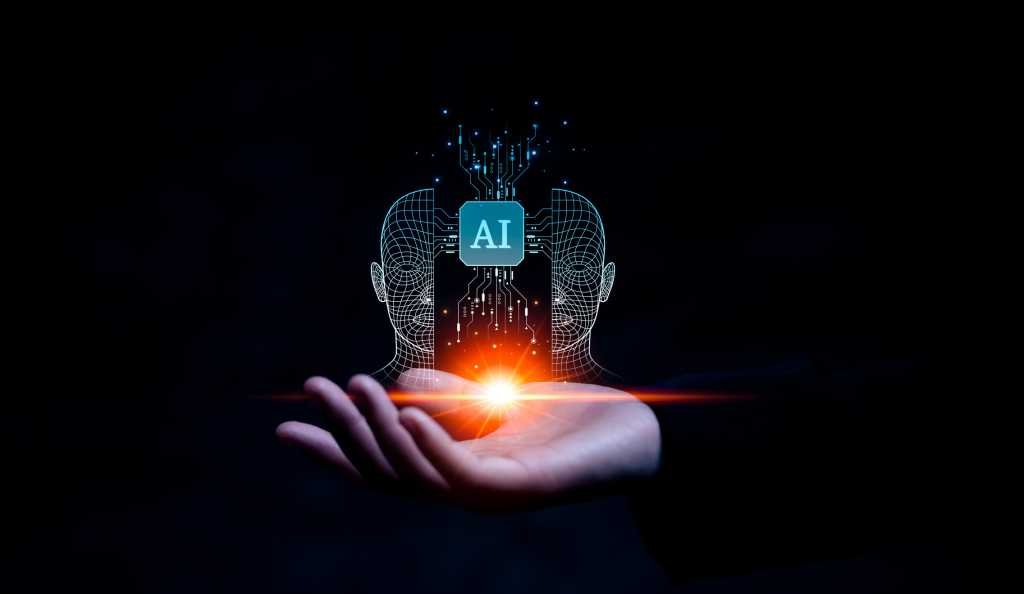AI Research
Jon Hernández, AI expert—“In two years, anyone who is not fluent in artificial intelligence will be out of the job market”

Artificial Intelligence (AI) is no longer science fiction or a luxury for tech experts. Today, AI is present in more and more aspects of our everyday lives: from internet searches to workplace tools, design platforms, and apps that can write or generate images in seconds. But beyond curiosity or entertainment, the real impact of AI will hit the job market.
AI expert and educator Jon Hernández made a bold prediction during an interview on the podcast La fórmula del éxito: “In two years, anyone who is not fluent in artificial intelligence will be out of the job market.” He is basically saying that this technological revolution is reshaping the way we work, and pretty fast. So, let’s find out more about this, shall we?
New job requirement
Not long ago, having a strong résumé meant listing things like a college degree, language skills, and experience with tools like Excel. Today, the important thing to know is how to use AI has become just as important.
Hernández stated that in only a few years, companies will expect employees to use AI tools as easily as they send an email. This doesn’t mean you need to be a programmer or data scientist. It means using artificial intelligence for everyday tasks like writing reports, analyzing data, managing schedules, creating content, or automating routine work.
The process is slow
Despite AI’s rapid development, Hernández admits that adoption in companies is slower than expected. Hernández believes this slowdown won’t last, because at some point companies will have to bring artificial intelligence into their everyday operations to stay competitive. But let’s see why this adoption is slow:
- Company mindset: Many managers are still unsure about trusting or investing in this technology.
- Startup costs: Bringing in new technology often means spending money upfront.
- Fear of change: Some businesses still use outdated systems, with workers who haven’t even fully adopted tools like Excel.
Prediction of the future
Hernández expects that in just two years, artificial intelligence will be everywhere in the workplace: “By 2025–2026, using artificial intelligence will be the norm. And if you don’t know how to use it (unless your job has nothing to do with computers) you won’t get hired.”
AI: Threat or opportunity?
It’s natural to feel concerned that artificial intelligence might replace jobs. But Hernández argues the real risk isn’t AI itself–it’s not knowing how to use it. The professionals who combine their human skills with the efficiency of AI will be the ones in highest demand.
In other words, artificial intelligence isn’t coming to take your job, it’s coming to take the job of the person who doesn’t know how to use it.
Let’s prepare
The good news is that learning artificial intelligence is easier than ever because we have access to free courses, tutorials, and simple platforms. The key is to start now and practice with different tools, so let’s see some easy steps:
- Try simple AI tools: Use text generators or virtual assistants to get used to them.
- Use it in everyday tasks: Let it help you write emails, create presentations, or review data.
- Think critically: To have correct and responsible answers, you should always check what artificial intelligence tells you.
- Go beyond work: Use it to organize personal tasks, pick up new skills, or even launch side projects.
So…
We’re moving into a time when AI will matter as much as computers or the internet did in the past. Learning to use it can open the door to better jobs, higher pay, and more productivity at work. So, you’d better start preparing because the future of work will depend on how well you adapt. As Jon Hernández warns, the countdown has already started and artificial intelligence will make you lose or keep your job.
AI Research
Imperial researchers develop AI stethoscope that spots fatal heart conditions in seconds

Experts hope the new technology will help doctors spot heart problems earlier
Researchers at Imperial College London and Imperial College Healthcare NHS Trust have developed an AI-powered stethoscope that can diagnose heart conditions. The new device can detect serious heart conditions in just 15 seconds, including heart failure, heart valve disease, and irregular heart rhythms.
The device, manufactured by US firm Eko Health, uses a microphone to record heartbeats and blood flow, while simultaneously taking an ECG (electrocardiogram). The data is then analysed by trained AI software, allowing doctors to detect abnormalities beyond the range of the human ear or the traditional stethoscope.
In a trial involving 12,000 patients from 96 GP practices throughout the UK, the AI stethoscope proved accurate in diagnosing illnesses that usually require lengthy periods of examination.
Results revealed that those examined were twice as likely to be diagnosed with heart failure, and 3.5 times as likely to be diagnosed with atrial fibrillation – a condition linked to strokes. Studies further revealed that patients were almost twice as likely to be diagnosed with heart valve disease.
via Unsplash
The AI stethoscope was trialled on those with more subtle signs of heart failure, including breathlessness, fatigue, or swelling of the lower legs and feet. Retailing at £329 on the Eko Health website, the stethoscope can also be purchased for home use.
Professor Mike Lewis, Scientific Director for Innovation at the National Institute for Health and Care Research (NIHR), described the AI-stethoscope as a “real game-changer for patients.”
He added: “The AI stethoscope gives local clinicians the ability to spot problems earlier, diagnose patients in the community, and address some of the big killers in society.”
Dr Sonya Babu-Narayan, Clinical Director at the British Heart Foundation, further praised this innovation: “Given an earlier diagnosis, people can access the treatment they need to help them live well for longer.”
Imperial College London’s research is a significant breakthrough in rapid diagnosis technology. Studies by the British Heart Foundation reveal that over 7.6 million people live with a cardiovascular disease, causing 170,000 related deaths each year.
Often called a “silent killer”, heart conditions can go unnoticed for years, particularly in young people. The charity Cardiac Risk in the Young reports that 12 young people die each week from undiagnosed heart problems, with athletes at particular risk. Experts hope this new technology will allow these conditions to be identified far earlier.
The NHS has also welcomed these findings. Heart failure costs the NHS more than £2 billion per year, equating to 4 per cent of the annual budget. By diagnosing earlier, the NHS estimates this AI tool could save up to £2,400 per patient.
Researchers now plan to roll out the stethoscope across GP practices in Wales, South London and Sussex – a move that will transform how heart conditions are diagnosed throughout the country.
Featured image via Google Maps/Pexels
AI Research
From pilot to profitability: How to approach enterprise AI adoption

From central authority to shared ownership
In conversations with other IT leaders, I’ve noticed a common pattern in how AI programs evolve. Most began with a centralized team — a logical first step to establish standards, consistency and a safe space for early experiments. But over time, it became clear that no central group could keep pace with every business request or understand each domain deeply enough to deliver the best solutions.
Many organizations have since shifted toward a hub-and-spoke model. The hub — often an AI center of excellence — takes responsibility for governance, education, best practices and the technically complex use cases. The spokes, led by product or functional teams, experiment with AI features embedded in the tools they use every day. Because they’re closer to the business, these teams can test, iterate and deliver solutions at speed.
When I look across industries, the majority of AI innovation is now happening at the edge, not the center. That’s largely because so much intelligence is already embedded into enterprise software. A CRM platform, for instance, might now offer AI-based lead scoring or predictive churn models — capabilities a team can enable and deploy with little to no involvement from the center of excellence.
AI Research
Larry Ellison Institute gives Oxford £118 million for AI vaccine research

The Ellison Institute of Technology (EIT) is funding an Oxford vaccine research project that will tackle pathogenic diseases using AI.
Ellison, who recently overtook Elon Musk as the world’s richest man, is giving Oxford £118 million for the programme, which will be led by the Oxford Vaccine Group.
Professor Sir Andrew Pollard, director of the group that led COVID-19 trials, described the programme as a “new frontier in vaccine science”. Scientists will use “human challenge models”, where volunteers are safely exposed to bacteria under controlled conditions and AI tools to identify immune responses that predict protection.
Oxford’s Vice-Chancellor, Irene Tracey, described the project as a “major step forward” in the strategic alliance with the Ellison Institute. She explained that her vision is to draw “more talent and capacity to the Oxford ecosystem to turn scientific challenges into real solutions for the world”.
EIT is designed to host 7,000 scientists, including an oncology clinic, auditorium, laboratories, library, classrooms, and park space. Oxford University, by comparison, has 5,000 research staff.
The Institute has already faced leadership turbulence, with the President, John Bell, resigning days before the vaccine project was announced. Bell was pictured signing the contracts with Irene Tracey when the “strategic alliance” was first announced in December 2024. Bell publicly endorsed Lord Hague in the Chancellor election last year.
The Wall Street Journal reported that Bell clashed with Ellison over operations and staffing, and that tensions flared over the mix of people being brought into the Institute, as well as Ellison’s decisions to fire senior staff without involving him.
Bell, who was Regius Professor of Medicine at Oxford until March last year, also serves as chair of Our Future Health, a government-funded project to genetically test millions of patients. He holds over £700,000 of shares in Roche, a pharmaceutical company where he sat on the board for 20 years, which has drawn criticism from genomics-monitoring groups for the “conflict of interest”.
Despite these controversies surrounding Bell’s various roles, a University spokesperson told Cherwell: “We recognise his pivotal contribution in helping to establish the Institute and in attracting outstanding researchers to its mission.”
Bell belonged to the Institute’s Faculty of Fellows alongside former Prime Minister, Tony Blair. Tony Blair’s own Institute for Global Change (TBI) is bankrolled by Ellison. As well as sharing their source of funding, the Ellison-funded institutes work in collaboration on an “AI for Governments” project.
Larry Ellison amassed his billions as boss of tech-giant Oracle, where he has made headlines for suggesting that Oracle would pioneer “AI mass surveillance”, as well as for his friendship with Israeli Prime Minister Benjamin Netanyahu, whom he offered a job at Oracle. Ellison donated to the Israeli military through Friends of the Israel Defense Forces, giving the organisation $16.6 million in 2017.
Ellison also reportedly has a close relationship with Trump, attending meetings in the Oval Office. Trump has questioned the effectiveness of COVID-19 vaccines, which were pioneered by the same Oxford Vaccine Group that are partnering with Ellison’s institute on this project.
Responding to Ellison’s ties to vaccine-sceptic politicians, as well as questions over the ownership of intellectual property (IP) stemming from the strategic alliance, the University spokesperson told Cherwell that it ensures any external partnerships “align with the University’s public mission, including by realising impact from our academic research”.
Further details on the ownership or management of intellectual property arising from the programme have not been made public.
-

 Business2 weeks ago
Business2 weeks agoThe Guardian view on Trump and the Fed: independence is no substitute for accountability | Editorial
-
Tools & Platforms1 month ago
Building Trust in Military AI Starts with Opening the Black Box – War on the Rocks
-

 Ethics & Policy2 months ago
Ethics & Policy2 months agoSDAIA Supports Saudi Arabia’s Leadership in Shaping Global AI Ethics, Policy, and Research – وكالة الأنباء السعودية
-

 Events & Conferences4 months ago
Events & Conferences4 months agoJourney to 1000 models: Scaling Instagram’s recommendation system
-

 Jobs & Careers2 months ago
Jobs & Careers2 months agoMumbai-based Perplexity Alternative Has 60k+ Users Without Funding
-

 Podcasts & Talks2 months ago
Podcasts & Talks2 months agoHappy 4th of July! 🎆 Made with Veo 3 in Gemini
-

 Education2 months ago
Education2 months agoMacron says UK and France have duty to tackle illegal migration ‘with humanity, solidarity and firmness’ – UK politics live | Politics
-

 Education2 months ago
Education2 months agoVEX Robotics launches AI-powered classroom robotics system
-

 Funding & Business2 months ago
Funding & Business2 months agoKayak and Expedia race to build AI travel agents that turn social posts into itineraries
-

 Podcasts & Talks2 months ago
Podcasts & Talks2 months agoOpenAI 🤝 @teamganassi

